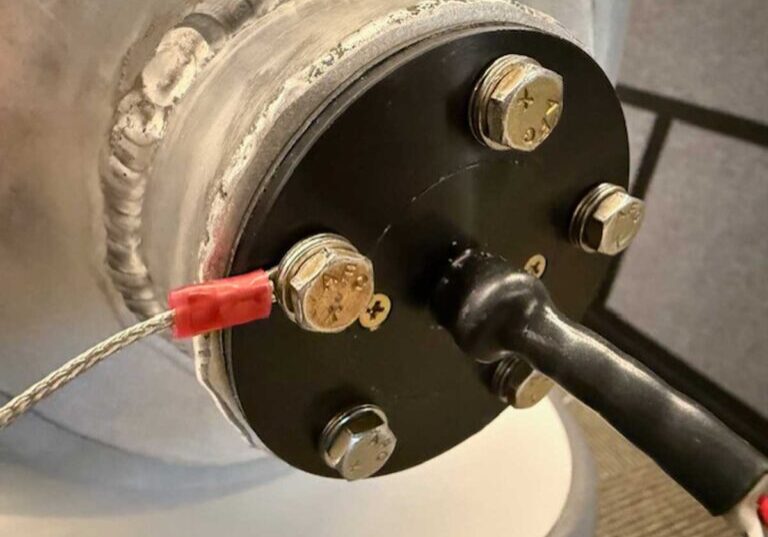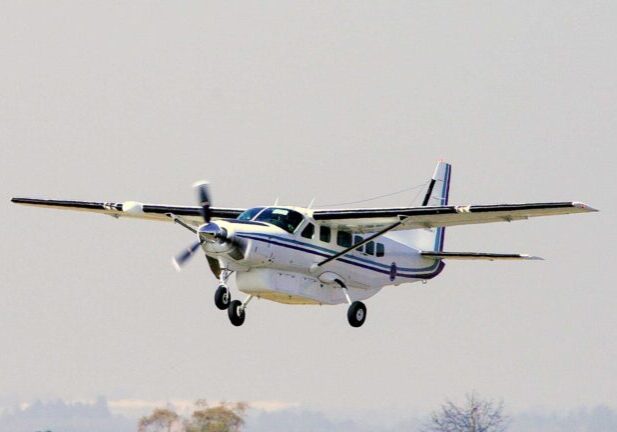Overview
While most STC installation manuals — including our own — instruct you to calibrate fuel tanks starting from empty to full, there are real-world cases where reverse calibration (starting full and draining in known increments) delivers better accuracy. For bladder-style fuel tanks — especially in certain Beechcraft and Cessna aircraft — this method better represents how the tank behaves in flight.
This post explores:
- Why reverse calibration works
- How to do reverse calibration while staying FAA-compliant
- How to verify calibration before sign-off
Why Reverse Calibration?
Standard calibration requires draining the tank and adding measured fuel volumes in steps, recording fuel sender output at each. But bladder tanks are flexible — and they deform non-linearly during filling and emptying.
This creates several problems:
- The first few gallons added may expand the tank horizontally without raising fuel level at the sender.
- The resulting calibration curve can appear flat near empty, under-reporting fuel.
- Top-end accuracy is difficult to trust, especially with aging or misshaped bladders.
By starting with a full tank and draining fuel in steps, the tank collapses naturally — and the sender readings more accurately reflect real-world conditions.
Aircraft That Benefit from Reverse Calibration
Aircraft that show measurable improvement using this technique include:
- Beechcraft Bonanza (all models with bladder tanks)
- Baron 58 and 55 series
- Cessna twins with auxiliary tanks
- Early single-engine Cessnas with bladder-style mains
- Any aircraft equipped with bladder tanks, especially if the tanks are aged, wrinkled, or have uneven collapses
FAA Language: What It Does and Doesn’t Require
FAA regulations like 14 CFR § 25.1553 and legacy § 23.959 require accurate, usable fuel quantity indication — but they don’t specify whether calibration must be performed from empty to full.
§ 25.1553:
“The quantity indication must be accurate under each intended operating condition.”
§ 23.959:
“The unusable fuel quantity… must be established as not less than the quantity at which fuel flow is unreliable in level flight.”
Most STC and TSO-based manuals (including those from Garmin and JPI) require calibration beginning at empty, primarily for consistency and traceability — not due to regulation. This allows room for shop discretion in how data is collected, as long as the stored calibration points are entered in the proper order.
How to Do It: Reverse Method + Full Compliance
Here’s how to use the reverse method while staying within installation and FAA guidelines:
Reverse Data Capture:
- Fill the tank completely
- Drain in precise steps (e.g., 5-gallon intervals)
- Record fuel quantity removed and sender output at each point
- Use your EFIS or engine monitor to log raw frequency
- Maintain aircraft in level flight attitude
Feed the Data (In Compliance):
- Use a precision frequency signal generator to inject the recorded frequency values back into the instrument
- Perform the standard empty-to-full calibration, matching your signal injection to fuel levels at each step
Your data matches actual tank behavior
The calibration order complies with STC guidance
Your accuracy is significantly improved
Final Step: Double-Check Accuracy Before Sign-Off
Once the system is calibrated:
- Fill each tank completely
- Confirm that each fuel display reads at or near full capacity, within 1–2 gallons
- Then drain each tank partially, and confirm known volumes are reflected in the gauge readouts at midpoints (e.g., half tank, quarter tank)
- If discrepancies exceed acceptable tolerance (typically 2–5%), revisit the associated calibration points
This extra validation ensures that the display reflects real fuel quantity, not just the shape of a curve.
Low-Cost Signal Generators for Field Calibration
Here are proven, budget-friendly tools to help you simulate CiES sender output during instrument calibration:
FeelTech FY3224S Function Generator
- TTL square wave output
- Frequency range: 1 Hz – 24 MHz
- Excellent for JPI, Garmin, and EI setups
JDS6600 Signal Generator
- Dual-channel output for Left/Right tanks
- Adjustable 1 Hz resolution
Required Specs:
- 5V peak square wave output
- 30–2500 Hz frequency range
- Stable signal with fine resolution
Conclusion
Reverse calibration isn’t a loophole — it’s a smart response to real-world tank behavior, especially in bladder-equipped aircraft. If you’re working on a Bonanza, Baron, or early Cessna, this method may offer the most accurate and pilot-trustworthy results.
As long as:
- You perform the final calibration input from empty to full
- You verify against known volumes at key points
- You log the process appropriately
…you’re staying within the spirit and structure of FAA guidance — while giving your customer a better performing system.
Need help applying this to a current install?
Or download the Calibration Worksheet for CiES + JPI/EFIS integrations
Share this:
About CiES Inc.
Established in 2012, CiES is now the largest supplier of aviation fuel quantity probes and senders. They are the recognized leader in the design, development, certification, and manufacture of electronic sensor solutions for original equipment manufacturers, as well as direct-to-market consumer products. Through the creative application of cutting-edge technologies, CiES creates complex end-to-end solutions. This is a company that is changing the game in aviation technology and revolutionizing the way we navigate the skies. Aiming at future growth and innovation, CiES is pushing the boundaries of what is possible.



